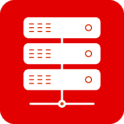
Overview

Product video
Redis Solutions [Private Offer Only] combines the benefits of the Private Offer feature along with Carahsoft's contract vehicles in providing customers a seamless acquisition process for their cloud-based products and solutions from AWS Marketplace.
From the creators of Redis, unlike other hosted Redis services, Redis Enterprise adds additional enterprise features to Redis OSS that enables Redis as a real-time data platform and a primary database. Go beyond caching with enterprise modules, clustering, Active-Active geo-replication, and more that enables the following capabilities:
- Modern Apps Support: Enables multi-model capabilities such as search, JSON, TimeSeries, Bloom filters, and Graph
- Scalability: deploy multiple Redis instances on a single cluster node enabling 100s of millions of ops/sec
- Durable and Disaster Resilient: protect against data loss, and enable fast recovery in case of complete outages
- Global low latency: up to 99.999% uptime SLA for global applications with Active-Active
- Attractive TCO: Auto Tiering supports large datasets for cost-effectiveness
Redis Cloud for AWS Marketplace includes:
- Redis Cloud as a line item on a unified AWS bill, with spend counting toward your AWS commit.
- Our team of experienced engineers will proactively act as an extension of your team by diagnosing, detecting, and troubleshooting potential issues.
- All enterprise features that are available with an annual subscription.
This listing is for Private Offers ONLY. Please reach out for more details. Thank you.
Highlights
- 1. Modern Apps Support: Enables multi-model capabilities such as search, JSON, TimeSeries, Bloom filters, and Graph 2. Scalability: deploy multiple Redis instances on a single cluster node enabling 100s of millions of ops/sec 3. Durable and Disaster Resilient: protect against data loss, and enable fast recovery in case of complete outages 4. Global low latency: up to 99.999% uptime SLA for global applications with Active-Active
- - Redis Cloud as a line item on a unified AWS bill, with spend counting toward your AWS commit.
- - Our team of experienced engineers will proactively act as an extension of your team by diagnosing, detecting, and troubleshooting potential issues. - All enterprise features that are available with an annual subscription.
Details
Introducing multi-product solutions
You can now purchase comprehensive solutions tailored to use cases and industries.

Features and programs
Buyer guide

Financing for AWS Marketplace purchases

Pricing
Dimension | Description | Cost/12 months |
|---|---|---|
Redis Cloud | Annual Commits | $10,000.00 |
Redis Cloud | Usage | $0.001 |
Redis Cloud | Data Transfer | $0.001 |
Vendor refund policy
The refund policy is included in https://redis.io/legal/cloud-tos/
How can we make this page better?

Legal
Vendor terms and conditions
Content disclaimer
Delivery details
Software as a Service (SaaS)
SaaS delivers cloud-based software applications directly to customers over the internet. You can access these applications through a subscription model. You will pay recurring monthly usage fees through your AWS bill, while AWS handles deployment and infrastructure management, ensuring scalability, reliability, and seamless integration with other AWS services.
Resources
Vendor resources
Support
Vendor support
All Contact Information is available at
AWS infrastructure support
AWS Support is a one-on-one, fast-response support channel that is staffed 24x7x365 with experienced and technical support engineers. The service helps customers of all sizes and technical abilities to successfully utilize the products and features provided by Amazon Web Services.
Similar products





Customer reviews
Performance shines with seamless session caching and minimal configuration
What is our primary use case?
What is most valuable?
The best features of Redis, from my personal perspective, are the performance, which is very quick, and it's very simple to implement.
Since I started using Redis, I feel that the product is saving me some performance tuning time. It's very easy, I have few parameters to tune, and it seems to have performance without a lot of working on the performance, compared to Cassandra , where you have to configure the memory and many other settings.
The integration capability of Redis is excellent.
Redis is very affordable because it's free.
What needs improvement?
The disadvantage of Redis is that it's a little bit hard to have too many clusters or too many nodes and create the clusters. The sync between the nodes is easier to implement with Couchbase , for example, and this is the only problem, the only disadvantage for me.
For how long have I used the solution?
I started using Redis this year.
What do I think about the stability of the solution?
The stability of Redis rates nine out of ten, with one being not stable and ten being very stable.
What do I think about the scalability of the solution?
The scalability of Redis rates eight out of ten, with one being not scalable and ten being very scalable.
How are customer service and support?
Technical support rates at three out of ten.
How would you rate customer service and support?
Neutral
Which solution did I use previously and why did I switch?
We started using Redis this year when we switched from Couchbase at the beginning of the year.
I have decommissioned Couchbase, which was not my database but my customer's database. They decommissioned it this year and chose Redis for the cache data parts, so I'm not using Couchbase anymore.
What about the implementation team?
We use community support and we don't have a provider for the support, but to be honest, we don't need support. From the time we implemented, I hope it will continue this way.
What was our ROI?
I see about 40% savings since using Redis.
Which other solutions did I evaluate?
In my projects, we use documents basically, so all the NoSQL databases can be mapped with an API to have a kind of independence from Redis and any tool. If tomorrow we want to move from Redis to something better, we are independent from that.
What other advice do I have?
If Redis has questions or comments related to my review, it's possible for them to reach me via email to clarify something.
I am interested in being a reference for Redis.
On a scale of 1-10, I rate Redis a 10.
Optimize AI projects with reliable data processing while addressing scaling challenges
What is our primary use case?
What is most valuable?
What needs improvement?
For how long have I used the solution?
What was my experience with deployment of the solution?
What do I think about the stability of the solution?
What do I think about the scalability of the solution?
Which solution did I use previously and why did I switch?
How was the initial setup?
What about the implementation team?
What's my experience with pricing, setup cost, and licensing?
Which other solutions did I evaluate?
What other advice do I have?
Accelerates data retrieval with an in-memory search tool to speed operations
What is our primary use case?
What is most valuable?
Redis acts as an in-memory search tool that improves the speed of operations. By making operations faster, Redis allows for quicker data retrieval and enhances the performance of applications.
What needs improvement?
Redis could be improved by introducing a GUI to display key-value pair database information, as it is currently a CLI tool with no visual representation.
Additionally, better documentation is needed to set up a secure Redis server with user authentication, as there are gaps and issues in this area.
For how long have I used the solution?
I have been using Redis for two to three projects recently, with a total experience of about five to six years.
What do I think about the stability of the solution?
Redis is quite mature and stable, and I haven't encountered any stability issues.
What do I think about the scalability of the solution?
Redis does not require scaling. It can be a central in-memory store for all scalable units of an application, and it is not necessary to have a duplicate copy of Redis.
How was the initial setup?
The setup is quite easy; I would rate it as eight out of ten. However, there might be some difficulties related to secure servers.
What's my experience with pricing, setup cost, and licensing?
Redis is a free tool available for on-premises installations. There's no cost associated with it as I haven't used any cloud services.
What other advice do I have?
Redis is a nice choice for building applications that require high turnaround times for user requests. It reduces turnaround time by building a cache solution based on Redis.
I rate it as eight out of ten.
Fast performance with scalable and seamless deployment
What is our primary use case?
I use Redis as a cache to store user sessions with login details and also some current status of the devices.
What is most valuable?
The performance of Redis is very fast. Its deployment is pretty easy when using it on ElasticCache, and I did not need to worry about scalability on AWS . It's pretty scalable and stable.
What needs improvement?
For the PubSub feature, we had to create our own tools to monitor the events.
For how long have I used the solution?
I have been using Redis for about six years.
What do I think about the stability of the solution?
The ElasticCache is pretty stable.
What do I think about the scalability of the solution?
I did not need to worry about it on AWS , so it's pretty scalable.
How are customer service and support?
I have never contacted the Redis support team.
How would you rate customer service and support?
Positive
What other advice do I have?
I would probably advise learning how to use command-line tools.
I'd rate the solution eight out of ten.
Which deployment model are you using for this solution?
If public cloud, private cloud, or hybrid cloud, which cloud provider do you use?
Efficient inter-thread communication, good with managing query caches and offers an easy setup
What is our primary use case?
In my current workplace, we use Redis for various purposes, including managing query caches, queues, and as a registry for different system components. These components register themselves when live, enabling efficient usage tracking.
Previously, at another company, we used Redis to cache machine learning models, facilitating model delivery across platforms without frequent disk retrieval.
How has it helped my organization?
In my current workplace, we use Redis for various purposes, including managing query caches, queues, and as a registry for different system components. These components register themselves when live, enabling efficient usage tracking.
Previously, at another company, we used Redis to cache machine learning models, facilitating model delivery across platforms without frequent disk retrieval.
What is most valuable?
Redis provides an easy setup and operation process, allowing users to quickly connect and use it without hassle. We primarily use Redis as a caching system due to its multiple data types and PubSub features, offering efficient data handling. Redis's PubSub capabilities benefit our communication by facilitating thread intercommunication. It allows multiple threads to exchange messages efficiently.
What needs improvement?
Redis presents a single point of failure and lacks fault tolerance. It would be beneficial if high availability features were available in the noncommercial version, similar to those offered by the commercial managed solutions from Redis Labs.
For how long have I used the solution?
I have been working with Redis for over ten years.
What do I think about the stability of the solution?
If Redis is set up correctly, it requires no maintenance and can function smoothly for long periods without intervention. Memory calculations should be precise to avoid issues.
What do I think about the scalability of the solution?
With approximately 500 microservices and environments scaling up to 1,000 customers, Redis accommodates a range of scales. Proper memory allocation allows for seamless operation.
How are customer service and support?
We have not utilized customer support for Redis.
How would you rate customer service and support?
Positive
Which solution did I use previously and why did I switch?
In comparison to other caching solutions like Memcached and Aerospike, Redis is easier to deploy and manage. Aerospike, while highly efficient, is more complex to set up.
How was the initial setup?
The initial setup of Redis is very straightforward and user-friendly. Deploying Redis takes about thirty seconds, making it quick and efficient.
What about the implementation team?
Implementation can be done in-house using AWS ElasticCache or Docker to run Redis on Kubernetes , depending on cost and environmental factors.
Which other solutions did I evaluate?
We use Kafka for inter-process communication, but Redis is used for thread intercommunication due to its PubSub capabilities.
What other advice do I have?
I recommend Redis as it provides an easy-to-use caching solution with beneficial PubSub features.
It's excellent for startups or new projects with many components needing coordination. However, for more advanced messaging or larger data volumes, Redis might not be the best fit.
I rate Redis a nine out of ten.